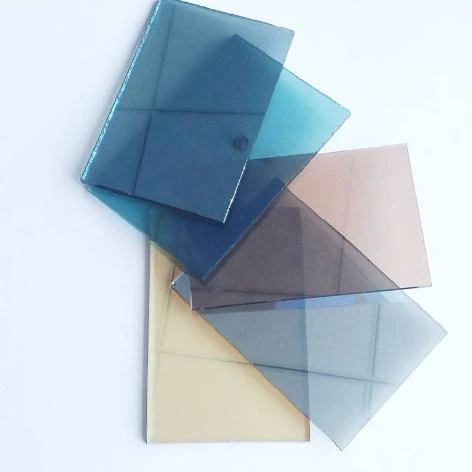The Flat Glass Manufacturing Process An Overview
Flat glass, a critical material used in various applications ranging from architecture to automotive industries, is produced through a sophisticated manufacturing process that ensures high quality and durability. Understanding this process not only highlights the technological advancements in manufacturing but also emphasizes the importance of flat glass in modern society.
Raw Material Preparation
The flat glass manufacturing process begins with the careful selection and preparation of raw materials. The primary ingredients include silica sand, soda ash, and limestone. Silica sand serves as the foundational component, providing the necessary silicon dioxide content. Soda ash acts as a flux, lowering the melting point of silica, while limestone adds calcium to enhance the glass's durability. Various additives such as colorants and fining agents may also be included to achieve specific properties or aesthetics.
Melting
Once the raw materials are prepared, they are mixed and placed into a furnace. The melting process typically occurs at temperatures ranging from 1,600 to 1,700 degrees Celsius. Modern glass furnaces, often equipped with regenerative heat recovery systems, are designed to promote energy efficiency while ensuring that the raw materials are fully melted into a homogenous molten glass. This step is crucial, as any impurities or inconsistencies can affect the quality of the final product.
Forming Processes
After the glass reaches a molten state, it is shaped into flat glass using one of several forming techniques. The most common method is the float glass process, invented in the 1950s. In this technique, molten glass is poured onto a surface of molten tin, where it spreads out evenly due to gravity and surface tension. This results in a smooth and flat surface on both sides of the glass sheet. The thickness of the glass can be controlled by adjusting the speed at which it flows over the tin.
Alternative methods include the roller-leaf process and the cast glass process, each suited for producing glass sheets of varying thickness and specifications. While float glass is dominant in the industry due to its excellent optical clarity and even thickness, other methods are employed for specialized applications, such as textured or laminated glass.
flat glass manufacturing process
Annealing
After forming, the glass sheets are gradually cooled in an annealing lehr. This step is vital to relieve internal stresses that may have developed during the rapid cooling process. The lehr operates at controlled temperatures, allowing the glass to cool uniformly and reducing the risk of cracking or breaking. The cooling rate is crucial; too fast or too slow can result in defects in the glass.
Cutting and Finishing
Once the glass has been properly cooled and annealed, it is cut to the desired size and shape. Advanced cutting tools, often computer-controlled for precision, ensure that the glass sheets meet the required specifications. After cutting, additional processes such as polishing, coating, or laminating may be employed to enhance the properties of the glass, such as UV protection or increased strength.
Quality Control
Throughout the entire manufacturing process, stringent quality control measures are implemented. Each batch of glass undergoes testing to ensure it meets industry standards for thickness, optical clarity, and surface quality. Automated inspection systems, along with visual examinations by skilled technicians, help to catch any anomalies early.
Conclusion
The flat glass manufacturing process is a complex interplay of materials science, engineering, and technology. From raw material preparation to quality control, every step is meticulously designed to produce high-quality glass that meets the demands of various industries. As technology continues to advance, the methods of production will likely evolve, further enhancing the properties and applications of flat glass in our daily lives.
 Afrikaans
Afrikaans  Albanian
Albanian  Amharic
Amharic  Arabic
Arabic  Armenian
Armenian  Azerbaijani
Azerbaijani  Basque
Basque  Belarusian
Belarusian  Bengali
Bengali  Bosnian
Bosnian  Bulgarian
Bulgarian  Catalan
Catalan  Cebuano
Cebuano  Corsican
Corsican  Croatian
Croatian  Czech
Czech  Danish
Danish  Dutch
Dutch  English
English  Esperanto
Esperanto  Estonian
Estonian  Finnish
Finnish  French
French  Frisian
Frisian  Galician
Galician  Georgian
Georgian  German
German  Greek
Greek  Gujarati
Gujarati  Haitian Creole
Haitian Creole  hausa
hausa  hawaiian
hawaiian  Hebrew
Hebrew  Hindi
Hindi  Miao
Miao  Hungarian
Hungarian  Icelandic
Icelandic  igbo
igbo  Indonesian
Indonesian  irish
irish  Italian
Italian  Japanese
Japanese  Javanese
Javanese  Kannada
Kannada  kazakh
kazakh  Khmer
Khmer  Rwandese
Rwandese  Korean
Korean  Kurdish
Kurdish  Kyrgyz
Kyrgyz  Lao
Lao  Latin
Latin  Latvian
Latvian  Lithuanian
Lithuanian  Luxembourgish
Luxembourgish  Macedonian
Macedonian  Malgashi
Malgashi  Malay
Malay  Malayalam
Malayalam  Maltese
Maltese  Maori
Maori  Marathi
Marathi  Mongolian
Mongolian  Myanmar
Myanmar  Nepali
Nepali  Norwegian
Norwegian  Norwegian
Norwegian  Occitan
Occitan  Pashto
Pashto  Persian
Persian  Polish
Polish  Portuguese
Portuguese  Punjabi
Punjabi  Romanian
Romanian  Russian
Russian  Samoan
Samoan  Scottish Gaelic
Scottish Gaelic  Serbian
Serbian  Sesotho
Sesotho  Shona
Shona  Sindhi
Sindhi  Sinhala
Sinhala  Slovak
Slovak  Slovenian
Slovenian  Somali
Somali  Spanish
Spanish  Sundanese
Sundanese  Swahili
Swahili  Swedish
Swedish  Tagalog
Tagalog  Tajik
Tajik  Tamil
Tamil  Tatar
Tatar  Telugu
Telugu  Thai
Thai  Turkish
Turkish  Turkmen
Turkmen  Ukrainian
Ukrainian  Urdu
Urdu  Uighur
Uighur  Uzbek
Uzbek  Vietnamese
Vietnamese  Welsh
Welsh  Bantu
Bantu  Yiddish
Yiddish  Yoruba
Yoruba  Zulu
Zulu 

